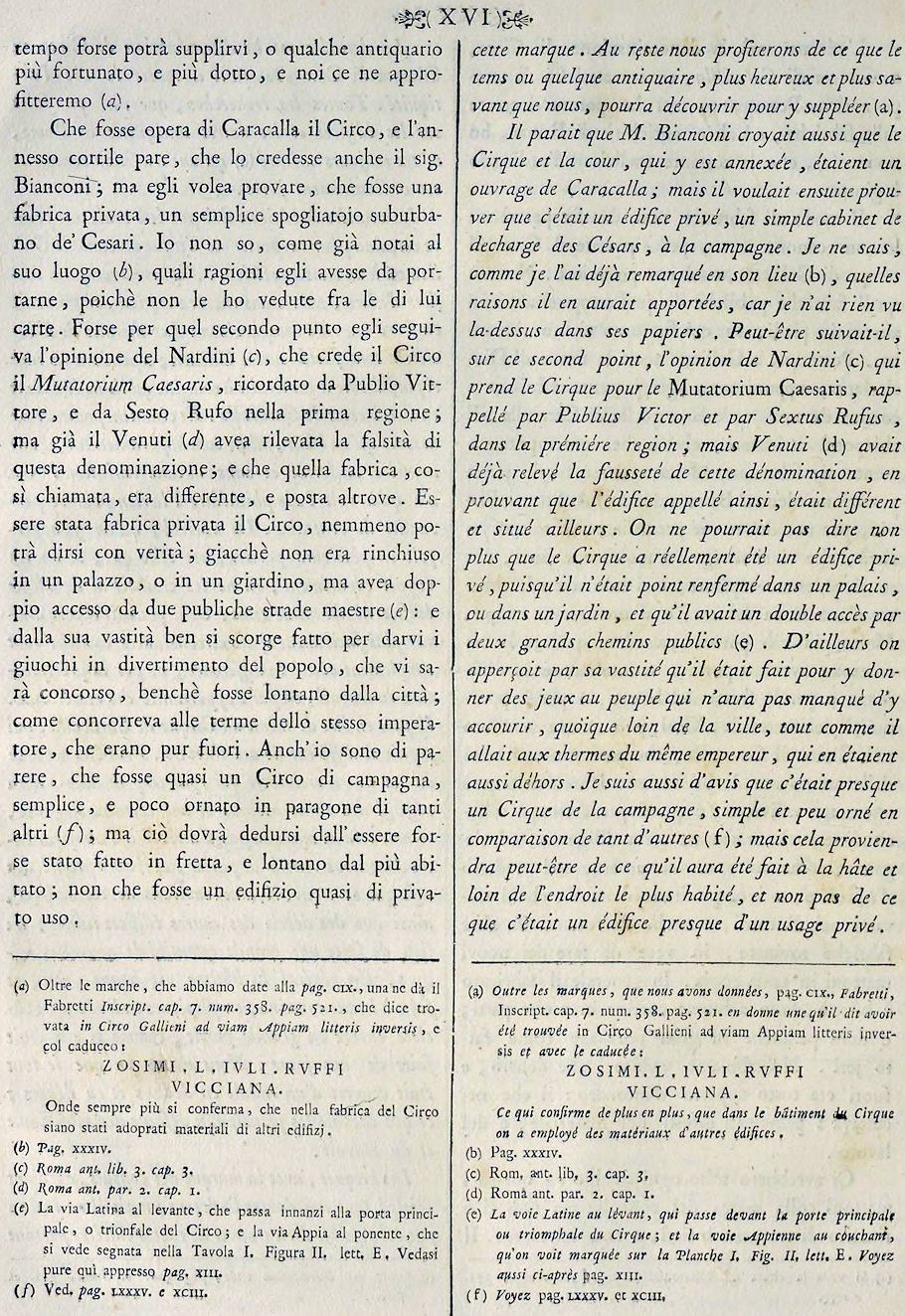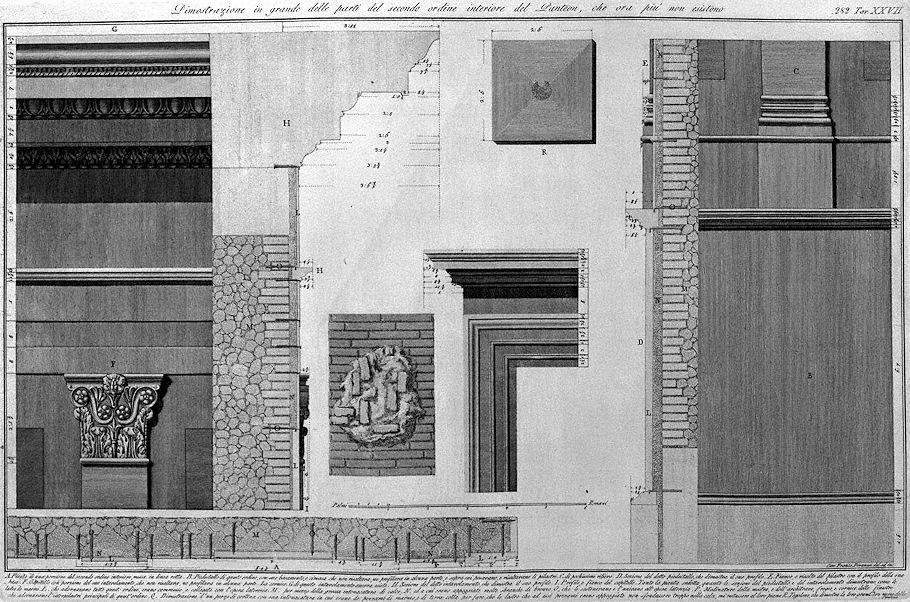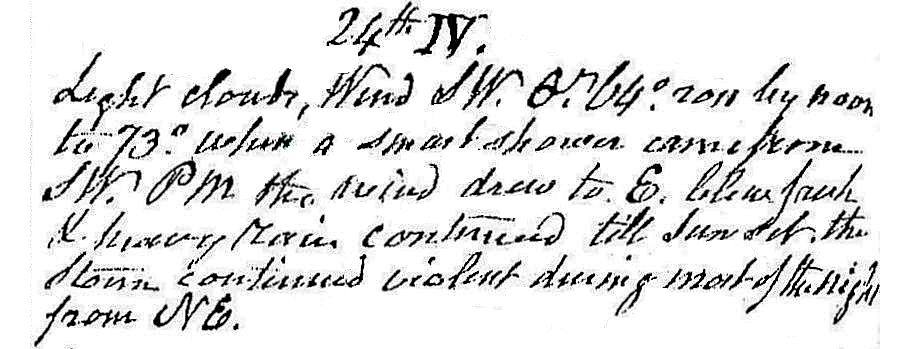24 June
Feast/Birthday of St. John the Baptist
St. Augustine, remarking that the Church celebrates the festivals of saints on the day of their death, which in the true estimate of things is their great birthday, their birthday to eternal life, adds that the birthday of St. John the Baptist forms an exception because he was sanctified in his mother's womb, so that he came into the world sinless. Indeed, the majority of divines are disposed to think that he was already invested with sanctifying grace, which would have been imparted by the invisible presence of our divine Redeemer at the time that the Blessed Virgin visited her cousin, St. Elizabeth. But in any case the birth of the Forerunner was an event which brought great joy to mankind, announcing that their redemption was at hand.*
John's father, Zachary, was a priest of the Jewish law, and Elizabeth his wife was also descended of the house of Aaron; and the Holy Scriptures assure us that both of them were just, with a virtue which was sincere and perfect--"and they walked in all commandments and justifications of the Lord without blame." It fell to the lot of Zachary in the turn of his ministration to offer the daily morning and evening sacrifice of incense; and on a particular day while he did so, and the people were praying outside the sanctuary, he had a vision, the angel Gabriel appearing to him standing on the right side of the altar of incense. Zachary was troubled and stricken with fear, but the angel encouraged him, announcing that his prayer was heard, and that in consequence his wife, although she was called barren, should conceive and bear him a son. The angel told him: "Thou shalt call his name John, and thou shalt have joy and gladness, and many shall rejoice in his birth, for he shall be great before the Lord." The commendations of the Baptist are remarkable in this that they were inspired by God Himself. John was chosen to be the herald and harbinger of the world's Redeemer, the voice to proclaim to men the eternal Word, the morning star to usher in the sun of justice and the light of the world. Other saints are often distinguished by certain privileges belonging to their special character; but John eminently excelled in graces and was at once a teacher, a virgin and a martyr. He was, moreover, a prophet, and more than a prophet, it being his office to point out to the world Him whom the ancient prophets had foretold obscurely and at a distance.
Innocence undefiled is a precious grace, and the first-fruits of the heart are particularly due to God. Therefore the angel ordered that the child should be consecrated to the Lord from his very birth, and as an indication of the need to lead a mortified life if virtue is to be protected, no fermented liquor would ever pass his lips. The circumstance of the birth of John proclaimed it an evident miracle, for Elizabeth at that time was advanced in years and according to the course of nature past child-bearing. God had so ordained all things that the event might be seen to be the fruit of long and earnest prayer. Still, Zachary was amazed, and he begged that a sign might be given as an earnest of the realization of these great promises. The angel, to grant his request, and in a measure to rebuke the doubt which it implied, answered that he should continue dumb until such moment as the child was born. Elizabeth conceived; and in the sixth month of her pregnancy received a visit from the Mother of God, who greeted her kinswoman: "and it came to pass that when Elizabeth heard the salutation of Mary, the infant leaped in her womb."
Elizabeth, when the nine months of her pregnancy were accomplished, brought forth her son, and he was circumcised on the eighth day. Though the family and friends wished him to bear his father's name, Zachary, the mother urged that he should be called John. The father confirmed the desire by writing on a tablet "John is his name"; and immediately recovering the use of speech, he broke into that great canticle of love and thanksgiving, the Benedictus, which the Church sings every day in her office and which she finds it not inappropriate to repeat over the grave of every one of her faithful children when his remains are committed to the earth.
The Birthday of St. John the Baptist was one of the earliest feasts to find a definite place in the Church's calendar, no other than where it stands now, June 24. The Hieronymianum locates it there, the first edition stressing the point that this commemorates the earthly birthday of the Forerunner. The same day is indicated in the Carthaginian Calendar, and before that we have sermons of St. Augustine delivered on this particular festival which sufficiently indicate the precise time of year by referring to those words of John reported in the Fourth Gospel: "He must increase, but I must decrease." St. Augustine finds this appropriate, for he tells us that after the birthday of St. John the days begin to get shorter, whereas after the birthday of our Lord the days begin to grow longer. Duchesne is probably right in urging that the connection of the feast with June 24 must have originated in the West and not in the East. He says: "It is to be noted that the festival is on the 24th and not on the 25th of June, and we may well ask why the latter figure was not adopted, since it would have given the exact interval of six months between the Baptist and Christ. The reason is [he goes on] that the calculation was made according to the Roman calendar; the 24th of June is the octavo kalendas Julii, just as the 25th of December is octavo kalendas Januarii" At Antioch, and in the East generally, the days of the month were numbered continuously forward from the first day just as we do, and June 25 would have corresponded with December 25 without attention being paid to the fact that the former month counted thirty days and the latter thirty-one. But just as the Roman date of Christmas was adopted at Antioch (very possibly through St. John Chrysostom's acquaintance with St. Jerome) in the last quarter of the fourth century, so it was not very long before the birthday of the Baptist was celebrated at Antioch, Constantinople, and in the other great Eastern churches on the same day as it was in Rome.
St. John the Baptist was a very popular saint in the middle ages, and much might be written about the religious orders, institutions, churches and shrines which were placed under his patronage; but all that we know for certain about his life is to be found in the pages of the four gospels. The story told in the apocryphal Protevangelium, otherwise known as the Gospel of James, which represents Zachary in the capacity of high priest, and as taking a prominent part in the marriage of Mary and Joseph, is altogether unreliable. Neither can we place unqualified trust in the little additional information which may be gleaned from the historian Josephus; Dr. Robert Eisler's book, The Messiah Jesus and John the Baptist (1931), which purports to be founded on the Slavonic text of Josephus, raises far too many doubts to be taken as a serious contribution to the subject.
* Today is of course the general feast day of the Baptist, and not simply a commemoration of his birth. But for convenience an account of his life is deferred herein until the commemoration of his beheading, on August 29.
The Martyrs under Nero A.D. 64
These confessors, whose number and names are known only to God, are described in the Roman Martyrology as "the first fruits with which Rome, so fruitful in that seed, had peopled heaven." It is interesting to note that the first of the Caesars to persecute Christians was Nero, perhaps the most unprincipled of them all.
In July 64, the tenth year of his reign, a terrible fire devastated Rome. It began near the Great Circus, in a district of shops and booths full of inflammable goods, and quickly spread in all directions. After it had raged for six days and seven nights and had been got under by the demolition of numerous buildings, it burst forth again in the garden of Tigellinus, the prefect of the praetorian guard, and continued for three days more. By the time it had finally died down, two-thirds of Rome was a mass of smouldering ruins. On the third day of the fire Nero came from Antium to survey the scene. It is said that, clad in theatrical costume, he went to the top of the Tower of Maecenas, and to the accompaniment of his lyre recited Priam's lament over the burning of Troy. His savage delight at watching the flames gave rise to the belief that he had ordered the conflagration, or at any
rate had prevented if from being extinguished.
The belief rapidly gained ground. It was said that flaming torches were thrown into houses by mysterious individuals who declared themselves to be acting under orders. How far Nero was responsible remains a moot point to this day. In view of the numerous destructive fires which have afflicted Rome throughout the ages, it is more than likely that this, perhaps the worst of them all, was due to accident. At the time, however, suspicion was so widespread that Nero was alarmed, and sought to divert it from himself by accusing the Christians of setting fire to the city.
Although, as we know from the historian Tacitus, no one believed them to be guilty of the crime, they were seized, exposed to the scorn and derision of the people, and put to death with the utmost cruelty. Some were sewn up in the skins of wild beasts and delivered to hungry dogs who tore them to pieces; some were crucified; others again were smeared over with wax, pitch and other combustible material, and after being impaled with sharp stakes under their chins were ignited to serve as torches. All these barbarities took place at a public nocturnal fete which Nero gave in his own gardens. They served as side-shows whilst the emperor diverted his guests with chariot races, mixing with the crowd in plebeian attire or driving himself in a chariot. Hardened though the Romans were to gladiatorial shows, the savage cruelty of these tortures aroused horror and pity in many of those who witnessed them.
Tacitus, Suetonius, Dio Cassius, Pliny the Elder, and the satirist Juvenal, all make reference to the fire; but it is only in Tacitus that we have a mention of Nero's attempt to fasten the outrage upon a particular sect. Tacitus definitely specifies the Christians by name, but Gibbon and others maintain that under that designation he included the Jews, because those who had adopted the teaching of our Lord Jesus Christ were not yet sufficiently numerous in Rome to be a source of alarm. This view, however, which seems only prompted by a desire to belittle the influence of Christianity, has not won many adherents.
Herbert Thurston, S.J. and Donald Attwater, Butler's Lives of the Saints (vol. 2, 1956), pp. 631-34.
24 June 1778 Wednesday
The annual "uffiziu" party, where each year the San Giovanni Battista stories and jokes just get funnier and funnier. And, as always, the highlight is Piranesi's latest Martyrs under Nero story. They too always get funnier.
1789
Descrizione dei circhi, particolarmente di quello di Caracalla e dei giochi in esso celebrati
Description of circuses, particularly that of Caracalla and the divine games celebrated in it

The bricks with the brand of the consuls would have removed all doubts about this; but we have not been able to find whole ones, and with that brand. Perhaps time will be able to replace you, or some more fortunate and more learned antiquarian, and we will take advantage of it (a).
It seems that the Circus, and the adjoining courtyard, were the work of Caracalla, that Mr. Bianconi; but he wanted to prove that it was a private building, a simple suburban changing room of the Caesars. I do not know, as I already noted in your place (b), what reasons he had to give, since I have not seen them among his papers. Perhaps for that second point he followed the opinion of Nardini (c), who believes the Circus to be the Mutatorium Caesaris, mentioned by Publius Victor, and by Sextus Rufus in the first region; but Venuti (d) had already pointed out the falsity of this denomination; and that the building, so called, was different and located elsewhere. Nor can it be said with truth that the Circus was a private building; since it was not enclosed in a palace, or in a garden, but had double access from two public main roads (e): and from its vastness it can be seen that it was well made to give you games for the amusement of the people, who will be involved, although it was Away from the city; as was the case with the baths of the emperor himself, which were also outside. I, too, am of the opinion that it was almost a country circus, simple, and little ornate in comparison with many others (f); but this will have to be deduced from the fact that the forge was done in haste, and far from the most inhabited; not that it was a building almost for private use.
32 y.o. Francesco Piranesi 1 August 1790
Raccolta de'Tempj antichi, Vol. II.

Large demonstration of the parts of the second inner order of the Pantheon, which no longer exist
A. Plan of a portion of the second interior order, placed in a straight line. B. Pedestal of this order, with its base, and cymatium that did not stand out, outlined in any part, and on which the pillars rested and stood out. C. of very little importance. D. Section of said pedestal, demonstrating its profile. E. Side, or prominence of the pillar with the profile of its base. F. Capitello with portion of his implication, which did not stand out, nor outlined in any part. The frame. G. of this tabulation still exists. H. Section of said tablature, showing its profile. I. Profile and side of the capital. Both the aforementioned plant and the sections of the pedestal and of the table demonstrate, such as the marble slabs. L. which adorned this whole order, were commissioned, and connected with the brick work M. by means of the large lime plastering; N. and to which many bronze branches were leaning. O. who supported them and joined them to the brick work. P. Modinature of the exhibition, and of the architrave, frieze, and frame of the windows that adorned the main inter-pillars of this order. Q. Demonstration of a piece of curtain with its plastering in which there were patches of marble and terra cotta to ensure that the slabs that the patches were leaning against did not sink too much into the lime, but remained on their level. R. Tegolone, demonstrating their greatness with the help of the figurine
Cav. Francesco Piranesi drawn and engraved
24 June 1812 Wednesday

Light clouds, wind SW, temperature 64° rose by noon to 73° when a small shower came from SW. PM the wind drew to E, blew fresh and heavy rain continued till sunset. The storm continued violent during most of the night from NE.
24 June 2003
Re: Götterdämmerung?
Remember, mnemonics is a technique of improving the efficiency of the memory, and not memory in and of itself. Memory is mental reenactment, thus mnemonics is a technique of improving the efficiency of mental reenactment. Mnemonics is very much an 'architecture' of reenactment.
24 June 2023 Saturday
It was around 23:35 that I learned that on 4 October 2022 I mistakenly thought/wrote that 25 June was the feast day of St, John the Baptist, and, till 23.35 tonight I was anticipating the feast of St. John the Baptist tomorrow. I'm a bit let down because I could/should have been celebrating today.
What I was going to write about tonight was, "Piranesi as an ending, of the whole Baroque, rather than Piranesi as a beginning, of the Modern, which is the role Francesco performed."
The "Circus of Caracalla" plan is as close to being modern as Piranesi got, and that closeness was indeed a solid portion of the thrill Piranesi received in discovering the correct formula of the Circus (of Maxentius, not) Caracalla plan.
There, that was a fine way to celebrate the last minutes of the feast/birthday of St. John the Baptist.
|